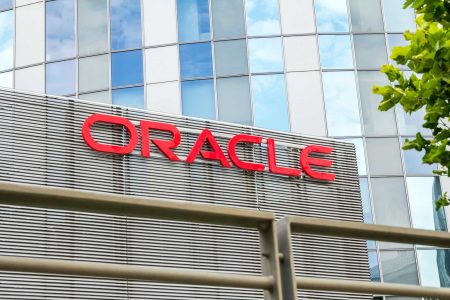IGM Financial Inc. (OTCPK:IGIFF) Q1 2024 Earnings Conference Call May 3, 2024 8:00 AM ET
Company Participants
Kyle Martens – Treasurer and Head of Investor Relations
James O’Sullivan – President and Chief Executive Officer
Damon Murchison – President and Chief Executive Officer of IG Wealth Management
Luke Gould – President and Chief Executive Officer of Mackenzie Investments
Keith Potter – Executive Vice President and Chief Financial Officer
Conference Call Participants
Geoffrey Kwan – RBC Capital Markets
Nick Priebe – CIBC Capital Markets
Jack Cohen – National Bank Financial
Operator
Thank you for standing by. This is the conference operator. Welcome to the IGM Financial First Quarter 2024 Analyst Call and Webcast. As a reminder, all participants are in listen-only mode, and the conference is being recorded. After the presentation, there will be an opportunity to ask questions. [Operator Instructions]
I would now like to turn the conference over to Kyle Martens, Treasurer and Head of Investor Relations. Please go ahead sir.
Kyle Martens
Thank you, Carl. Good morning, everyone, and welcome to IGM Financial’s 2024 first quarter earnings call. Joining me on the call today, we have James O’Sullivan, President and CEO, IGM Financial; Damon Murchison, President and CEO, IG Wealth Management; Luke Gould, President and CEO, Mackenzie Investments; and Keith Potter, Executive Vice President and CFO, IGM Financial.
Before we get started, I would like to draw your attention to our cautions concerning forward-looking statements on Slide 3 of the presentation. Slides 4 and 5 summarize non-IFRS financial measures and other financial measures used in this material. And on Slide 6, we provide a list of documents that are available on our website related to IGM’s first quarter results.
I’ll now turn it over to James.
James O’Sullivan
All right, good morning, everyone, and thank you Kyle. Turning to Slide 8. We delivered a record high first quarter adjusted EPS of E0.94, up 8% year-over-year, driven and part by strong asset growth during the past 12 months.
AUM&A including our proportionate share of strategic investments reached $422 billion at the end of the first quarter. This is about 21% relative to the same time last year. Both our Wealth and Asset Management segments contributed to asset growth with each and every company increasing their AUM&A over the past year.
I’d remind you that our reported Q1 2024 net outflows of $128 million exclude our strategic investments each of which experienced positive net flows during the quarter.
We spoke to our approach to capital allocation during our Investor Day and on our previous earnings call. Our number one priority continues to be investing to position our core businesses for continued long-term success and growth.
Our current strong dividend continues to be very important to us and we know attractive to our shareholders. And we have addressed our approach to share buybacks where we will seek to offset dilution where applicable and opportunistically repurchase additional shares in consideration of other capital allocation priorities.
During the first quarter we began acquiring shares under our NCIB at an attractive price
We’ve returned $146 million of capital to shareholders during the quarter including $12 million through share repurchases. We continue to be very well positioned financially with reasonable leverage and over $400 million in unallocated capital on the balance sheet as of March 31st.
We remained in the market repurchasing shares through the month of April, buying an additional $440 IGM shares for $15 million.
Finally, IGM continues to be recognized as a top employer. In addition to being recognized as a top 100 employer in Canada by Media Corp, during the first quarter we received further recognition as one of Canada’s greenest employers, a top diversity employer and a top employer in the province of Manitoba. Our collective achievements and progress across IGM Financial are fueled by our diverse and highly engaged teams.
We’ve invested considerable time and effort into shaping our leading and deeply rewarded experience for our employees and are proud to see this continue to be recognized.
Shifting to the current environment for our businesses, starting with recent financial market conditions on Slide 9. Even after factoring in a softer April, we’ve seen strong growth in equity markets year-to-date across all major economies around the world adding to the roughly 10% average return achieved for our clients in 2023.
Looking at the Canadian funded industry on Slide 10.
The first quarter’s industry net flows were effectively zero with net flows into income-oriented solutions and alternatives offset by outflows elsewhere, while high interest rates and inflation continue to weigh on Canadians, we are seeing strength in a number of areas including an extended period where being invested in the financial markets has been well rewarded supporting investor confidence levels over the long-term.
A demonstrated ability at IG Wealth to attract high networth and mass outflow and client relationships through a wide range of business cycles.
At Mackenzie, we see strength in distribution relationships with wealth management partners including PFSL and Wealthsimple
And finally, there has been significant growth across our strategic investments that are each positioned to take advantage of attractive secular trends in the Wealth and Asset Management industries.
Slide 11 outlines IGM’s consolidated average AUM&A, and the record high Q1 adjusted EPS. And on slide 12, we show the strong growth in net earnings that our Wealth and Asset Management segments up 7% and 12% respectively. Keith will speak to this in more detail later on the call, but I’d like to highlight here that the increase in earnings power has been supported by very strong asset growth over the past year.
Turning to Slide 13, where we show double-digit AUM&A growth over the past 12 months at almost all of the businesses including IG Wealth Management which Damon will speak to next along with the Wealth Management segment as a whole. And so, I’ll pass it over to Damon.
Damon Murchison
Thank you, James and good morning, everyone. Turning to Slide 15 and Wealth Management’s first quarter highlights including IG Wealth, Rockefeller & Wealthsimple. IG Wealth ended the quarter with AUM of $128 billion, up a solid 10% relative to last year and up 5% – 5.6 % during the quarter driven by financial markets.
Gross inflows of $3.7 billion represent another strong quarter and our second best first quarter gross inflows in our history.
Net inflows were $223 million during the first quarter. This excludes $177 million outflow relating to the IG defined benefits pension plan, which was transferred in January to an SMA account at Mackenzie. IG’s growth outlook as a percentage of average AUA over the last 12 months remained well below the industry and ended the quarter at 11%, while the industry redemption rate was closer to 16%, both rates remained largely unchanged versus Q4.
Client acquisition during Q1 was a continued strength with new million dollar gross inflows representing approximately 28% of total new client gross inflows.
On a later slide, I’ll highlight the growing strength in our insurance business and touch on how we expect to further digitalize this business going forward. Also make some comments on our number one share of voice ranking in the Canadian wealth marketplace during the call. Lastly, I’ll provide an update on Rockefeller and Wealthsimple, both of them continue to execute well on their respective growth strategies.
Turn to Slide 16, you can see IG’s Q1 flows. Our gross inflows continue to remain strong. Eight of the last 10 quarters, we’ve seen gross inflows in excess of $3 billion and we remained above the $3 mark during the first quarter for each of the last five years.
Outflows continue to be partial in nature as Canadians continue to pay down debt and fund their lifestyle through a difficult economic environment marked by elevated inflation and interest rates. Similar to last three quarters, this remains an industry trend. As our advisors work with their clients and navigate the current economic environment, we are confident that our clients can better positioned to save and build their wealth when the rates begin to fall and normalize.
Turn to Slide 17. I’ll make a few points here. Here at the top left, we’ve excluded the transfer from the IG pension – the defined benefit pension plans from the gross outflows during the quarter. To the right, the outflows rate, you can see our IGM Solution as a percentage of total AUA continues to remain strong.
We continue to see an opportunity with our client cash, GIC and HISA, including dollar average costing back into the markets over time.
Lastly, our investment performance continue to deliver strong relative performance with 65% of our assets ranked four or five star by Morningstar, up from 59% last quarter and 93% of our investment solutions ranked 3 stars or higher.
Turn to Slide 18. Our value proposition continues to resonate and we continue to see strong new client acquisition, particularly with massive flows and high networth clients. During the first quarter, we had $445 million in gross inflows from newly acquired mass inflowing clients between $250,000 and $1 million representing 45% of our gross inflows from newly acquired clients.
While we had $273 million in gross inflow from newly acquired clients over $1 million representing approximately 28% of our gross inflows from newly acquired clients during the quarter. This is a significant increase from 15% where we were in Q1 of 2018. The first quarter was our second highest quarter on record in gross inflow from newly acquired clients over $1 million.
Put together mass inflows and high net worth gross inflows from newly acquired clients represented 73% of gross inflows from newly acquired clients in Q1, up from 56% in Q1 of 2018. As we continue to execute our strategy, we fully expect these percentages to increase over time.
Turn to Slide 19. This shows the productivity of our advisors, an increasingly important metric. We continue to see strong productivity as we execute against our segmented advice model and invest in further digitalization of our business. We expect this to see this continuation trend of – content trend over time.
Turn to Slide 20. I want to take a moment to speak about the progress in our insurance business. The insurance business has been growing steadily and during the first quarter, we reported our best Q1 first year commission since 2017. It was also our highest average case size ever in a quarter as measured by first year commissions.
As you know, first year commissions are a key indicator for the health of an insurance business. Over the last five years, we’ve seen our first year commissions grow by 36%. The increase in average case size reflects our success in attracting and working with more mass affluent and high net worth clients. Our advisors are leveraging the tools, training and access to insurance experts through our private wealth planning experience to both identify and meet our clients’ insurance needs.
We see further opportunities for growth in this business. And during last year’s Investor Day, I spoke about our investment focus as it relates to insurance and our desire to continue to invest in this part of our business and that’s exactly what we’ve been doing.
Two weeks ago, we announced the partnership with Life Design Analysis, a leading Edge fintech solution provider in the insurance space, so that we can leverage our sales enablement technology to allow us to provide a better advisory and client experience as it relates to insurance. With the strength of this business in the investments and digitalization we expect to deepen our market penetration and drive further growth.
Turn to Slide 21, this represents another success factor in our journey. Recognition of IG Wealth as a number one wealth brand from an earned media perspective.
Along with our brand’s 25% share of voice in the Canadian wealth marketplace, the breadth of our spokespeople is also front and center. This is more than an accolade of our people in print, in radio, TV and in digital space, it represents our voice and our views being heard not just by our clients but our future clients.
We are in front of the country showcasing our knowledge on financial planning, insurance, tax planning, banking and Investment strategy, providing our thought leadership and speaking to our advice capabilities. This will continue to be an important part of executing our strategy and providing us with a platform to reach our key client segments.
Now turning to Slide 22. I’ll provide some updates on Rockefeller’s progress. Client assets were up 27% year-over-year and were approximately 9% during the quarter, driven by strong markets, as well as continued inorganic and organic growth. Over the last 12 months or organic growth is driven $3.3 billion in client assets. Rockefeller also continued to see strong acquired production during the quarter.
Turn to Slide 23. Wealthsimple saw another incredible strong quarter as they continue to reinforce themselves, it is an important part of the Canadian wealth management ecosystem.
Wealthsimple AUA in Q1 ended at $39 billion advancing by an incredible 25% or $7.7 billion during the quarter, another record quarter of growth. On a year-over-year basis, AUA was up 82%. Clientele also expanded by 12% year-over-year to 2.4 million clients.
Wealthsimple has continued to prove their ability to execute and continued their ability to execute and continues to deliver strong results.
With that, I’ll turn it over to Luke Gould.
Luke Gould
Great. Thanks, Damon. Good morning, everybody. So turn to Page 25, a few comments in the quarter. At first Mackenzie’s AUM reached $203.7 billion, up 4.1% in the quarter, driven by strong investment returns to clients. Client returns were 5.5% in the quarter and are just over 10% in the last year.
On point 2, investment funds experienced net redemptions of $194 million during the quarter, which continues to be in line with the industry requirement, while return to generative clients and rewarded clients per remaining committed to the financial plans through volatile markets it did remained challenging for industry flows entering RSP season.
In point three, the share of our assets in 4 and 5 star funds remained unchanged quarter-over-quarter at 51%, and at the bottom left I highlighted a couple of noteworthy developments in the quarter. First we’ve launched a number of new funds advised for our Global Quantitative Equity boutique in Boston. This includes a World Low Volatility ETF at Global Shariah Compliance Equity Fund and in the emerging markets, ex China Fund that complements our China Fund – by ChinaAMC
As reviewed at Investor Day, our Global Quantitative Equity boutique has delivered exceptional performance among world leaders for both in institutional and retail strategies since its inception of Mackenzie in 2017. These new strategies we launched for retail supplementary existing retail strategies that have exceptional performance that we are leaning into with this boutique and we are actively – the following.
This includes our global equity, emerging markets and our PE replication mandates. We’re also very proud of being awarded the lead sponsorship for the United Nations PRI in Person event which is to be hosted Toronto during October. This is the world’s pre-eminent responsible investing event and we’re very pleased to bring our support through our focus on sustainable investing to make this year’s conference a success.
In the top right, ChinaAMC’s growth continues to impressed with investment fund increasing by 14% during the first quarter alone and 26% over the last 12 months. This growth continues to be primarily driven by strong investment fund net flows with RMB201 billion or CAD$35 billion in net flows during Q1.
And NorthLeaf delivered $0.7 billion in new commitments since our initial investment in 2021 NorthLeaf has averaged about $1 billion of in new commitments every single quarter.
Turn to Page 26, you can see the trended history of Mackenzie net flows. On the right, you can see the last 12 month trending net sales are relatively stable and the chart in the left brings out that net redemptions of $194 million was down slightly from slight – net inflows last year
You can also see the chart left that we had net inflows of ETFs of $332 million that offset mutual fund net outflows of $536 million.
On Page 27, on the bottom right, you can see that our overall net investment fund sales is in line with industry peers. In the table in the bottom left, you can see that retail mutual funds continues to be impacted by industry dynamics. What we saw positive flows to retail ETFs, as well as institutional investment funds.
On our retail posing, just comment a few of our larger mandates, we have had softer near term performance that’s led to an increased redemption rate. Long term performance in of these mandates remains excellent and they remained disciplined as they invest according to the respective approaches and I’ll provide on the next color.
Institutional Investment Fund net sale improvements were driven by our partnerships with Primerica and Wealthsimple.
Turn to Page 28, you can see our performance in net sales for our retail mutual fund by boutique. You’ll note at the bottom, this quarter we’ve added our retail ETF net creations and this will be a standing disclosure going forward.
You can see with strong long-term performance and evolving performance across a number of boutiques and we have compelling mandates in a number of categories in demand that we’re leaning into.
On this slide, as mentioned I highlight the Bluewater and Greenchip have had softer near term performance within their categories and this has led to increased redemption rates. And I would have reinforced that each had very strong long-term track records and it continue to be disciplined within the respective of approaches and gross sales to these mandates remained consistent.
As mentioned in previous calls, we’re a trailblazing journey, driving private asset classes and quantitative investing at retail. In the fifth column to the right, you can see our Global Quantitative Boutique and they’ve delivered very strong track records among the top in the world since joining in 2017 and they actually own all these performance numbers – maintaining a number.
As mentioned earlier, we supplemented their existing retail mandates which been new launches, and we’re very pleased with the support we’re seeing for this boutique getting into Q2.
Other noteworthy areas where we see compelling performance in categories in demand include our global equity and income boutique, our US All Cap Growth Fund advised by Quantum which is the column in the right and we continue to scale our NorthLeaf Private Asset Class products and we are now in excess f $200 million in these products.
On Page 29, I highlight that we launched our third Annual Sustainable Investment Report in April. This report outlines our continued progress, our approach and the impact that our efforts have. As highlighted at Investor Day in December, we’re so pleased to be rated number one among large peers in the quality of the ESG offering by advisors and also to have the largest thematic sustainable fund in Canada. And as mentioned earlier, In January, we are awarded the lead sponsorship for PRI in Person Conference that’s being held in Toronto.
We view this conference a bit like the Olympics. This is the only time in our career this is to be held in Canada and we look forward to this event and we are hoping to see so many of you there. This is the world’s pre-eminent responsible investing conference and it is the fresh moments for us to have it here in Canada.
We’re doing all we can to make it a success and we are looking forward to engaging with institutional investors and other key stakeholders and industry peers on these important topics.
Turn to Page 30. You can see the growth in the Chinese investment fund industry with industry assets up 6% in the quarter and long-term funds up 2%. In the bottom left, you can see the significantly net inflows of RMB 1.6 trillion with meaningful money markets flows leading to a 11% increase in money market fund assets in the quarter alone.
On the right, I really want to highlight the continued strengthening of ChinaAMC’s market position it remains the second largest Chinese Asset Management in terms of both long-term funds and overall investment funds and here you can see that our market position continue to strengthen, increasing up 5.6% share, up from 5.1% in December and 4.6% one year ago.
Turn to Page 31, you can see with enhanced disclosures here by introducing investment fund net flows for ChinaAMC in the bottom and you can see ChinaAMC’s AUM is now crossed RMB2 trillion or CAD$400 billion.
Overall assets were up 15% in the quarter and 18% in the year. Long-term funds increased by 11% in the quarter and are up 27% in the year and substantially all this increase came from net inflows. During the quarter, total investment fund net flows for ChinaAMC were RMB201 billion or CAD$38 billion, that’s an annualized net sale rate of over 40% and more than half of ChinaAMC’s net inflows were from long-term funds.
We remain very optimistic for future growth in this industry as China is committed to building a high quality retirement market and we continue to be encouraged and confident in ChinaAMC’s ability to maintain and grow market share within this high growth industry.
I’ll now turn over to Keith Potter.
Keith Potter
Thank you, Luke and good morning, everyone. On Slide 34, you can see key highlights for Q1. Reported and adjusted EPS are both $0.94. In addition to reporting Lifeco’s net earnings in our reported EPS, we are also reporting adjusted earnings reflecting Lifeco’s base earnings on a go-forward basis. We’ve also reinstated prior quarters adjust earnings.
We are adding this disclosure recognizing the potential meaning difference between net earnings and base earnings – quarter like quarters and big option of IFRS 17. And that base earnings is a key alternative measure of Lifeco’s profitability that is followed by the investment community.
In December 2023, we announced our NCIB program and during the quarter, returned $146 million to shareholders through the quarterly dividend and $12 million in share repurchases. We also bought back $15 million in shares through the month of April.
With the continued strength of Wealthsimple’s performance, we mark up the fair value of our investment from $607 million to $722 million, which is fair value through other comprehensive income. And finally, we receive dividends from both ChinaAMC and NorthLeaf with ChinaAMC’s dividend of $72.9 million being the largest dividend received to-date.
Turning to Slide 35, you can see our AUM&A and flows. As a reminder, we are now presenting our all historical flows and AUM data excluding ITC. Coming off a strong Q4, AUM&A was up an additional 5% in Q1 while average assets increased by 5.5%.
Turning to slide 36, we have consolidated earnings at IGM, the strong growth in average AUM&A supported higher revenues in both our Wealth and Asset Management segments, we also had a strong quarter in the Mortgage Insurance business driving Wealth Management revenues. On point two, net investment income was higher, primarily due to mark-to-market gains on seed capital.
And point three, our operations & support business development expenses were up slightly on a year-over-year basis but down sequentially and we are maintaining our full year guidance of approximately 4% growth over 2023.
On Slide 37, we present some profitability drivers for IG Wealth and I’ll highlight a few points. First, the advisory fee rate increased from 102.1 basis points to 100.3 basis points which was primarily driven by client moving up Wealth bands with strong growth at average AUM&A which was up 6%. The growth in AUM&A is more typical of annual growth and the largest impact on the fee rate.
You can see that the product and progress theories were stable in Q1, in spite of the asset-based compensation rate is up in the quarter driven by annual reset in advisor qualification theories in the corporate channel and this offset the downward movement from the program changes I spoke to last quarter.
On Slide 38, you can see IG’s overall earnings of $117.2 million, up 12.1% relative to Q1 2023. On point one, I spoke to this new drivers of advisory fee and product fee revenues on the previous slide, and year-over-year and sequentially, other financial planning revenue was up in both the Mortgage and Insurance businesses. The mortgage business was driven by the combination of gain on sales, positive fair value adjustments, and positive mortgage warehouse income.
And as a reminder, fair value adjustments were negative last quarter and a year ago. The insurance business also experienced a strong quarter with the highest revenue since 2017 and this is great to see with insurance being a key part of future growth for IG Wealth Management.
Moving to Slide 39, you can see Mackenzie’s AUM by client and product type, as well as net revenue rates. The decrease in the third-party revenue rates ex Canada Life was driven by a few items. First, the rate is down 0.3 basis points due to having one less day in the quarter where we collect revenues for 91 days, pay distributors compensation based on one quarter of the year.
We also continued to see strength in our third-party wealth management partnerships, the PFSL and Wealthsimple, which have both diversified and shifted Mackenzie’s AUM mix. And finally, the rate was impacted by the pension mandate we allocated from IG Mutual Fund.
Turning to Slide 40, you can see Mackenzie’s earnings of $57.3 million, up 18.4% year-over-year and 16% quarter-over-quarter. Better results were driven by higher net management fee revenue, lower operations in support of this development expense, as well as higher seed capital mark-to-market returns. So well diversified.
On point three, operations to support business development, expenses were down 4.9% on a year-over-year basis and down 2.6% from the last quarter and then recall that organizational streamlining occurred in Q2 of last year resulting in a favorable impact for Q1 2024 when compared to Q1 2023.
Also there is some timing – our investments and initiatives such as products and clients and advisor facing capabilities that will occur over the balance of the year.
Slide 41 has ChinaAMC results. On the left, ending AUM of RMB 82.1 trillion is up 15% quarter-over-quarter with average AUM increasing 7%. With respect to earnings on the right, the quarter-over-quarter earnings increased with average assets. On a year-over-year basis, earnings were down primarily due to the regulatory mutual fund fee rate performance that we spoke to during Q2 2023 call.
The strengthening of the Canadian dollar and fair value gains last year versus this year and these items were partially offset by 9% increase in average AUM over the same time period.
As we mentioned, a portion of ChinaAMC’s dividend was the highest dollar value we have received, which is a testament to both the strength of the business and the confidence of management.
On Slide 42, you can see our earnings contribution from company’s each segment. There is two comments. First on Rockefeller, and the loss of $4.4 million was driven by lower revenue and their M&A Strategic Advisory business, which has evolved quarter-to-quarter and the full implementation of a new equity compensation program I mentioned a few quarters ago.
As Damon spoke to earlier, the core private wealth business is performing very well. And we do expect a similar result in Q2 an improvement in the second half of the year.
Second on NorthLeaf, earnings of $5.7 million after non-controlling interest are up over last year and this was driven by higher net incentive fees which are occurring in Q1 of each year and excluding incentive fees, earnings would have been between $3 million and $3.5 million.
Slide 43 provides a summarized view of ownership and our value of strategic investments by segment. A couple of points first. We increased the fair value of Wealthsimple simple to $722 million, which reflects the outstanding performance in q1 that Damon touched on. Our revised revenue forecast for the company and a increase in pure multiples.
As mentioned last quarter, we give consideration to IGM’s values in some of the parts. At the bottom right, you can see the value of our strategic investments across the segments to build our $5 billion.
Slide 44 highlights execution against our capital allocation priorities. At Investor Day and last quarter, we discussed priorities to invest in our business, sustained a strong dividend while balancing the opportunity to repurchase shares and investment companies we already own.
In Q1, in addition to paying the quarterly dividend, we started executing on share repurchases taking an opportunistic price with the lower share price. At the same time, we have done what we said we would do at the announcement of Rockefeller transaction and brought our leverage down below two times post transaction close.
Our unallocated capital has also increased from $282 million last quarter and $402 million at the end of Q1 2024, primarily from cash earnings net of IGM’s dividend including the $72.9 million dividend we received from ChinaAMC. As we move forward, we will continue to execute on the priorities including building our businesses and executing on our NCIB.
That concludes my remarks and I’ll open it up for questions.
Question-And-Answer Session
Operator
[Operator Instructions]
The first question comes from Geoffrey Kwan of RBC Capital Markets. Please go ahead.
Geoffrey Kwan
Hi good morning. My first question is for James or for Keith. You’ve talked before about maybe taking a bit of a pause in terms of acquisition activity, but the unallocated capital has increased your balance sheets pretty healthy and then you do generate some good cash flow.
Just wondering how you are thinking about capital allocation and in particular, just appetite on being more active on share buybacks have been potentially a consideration for substantial issuer bids.
James O’Sullivan
Yeah, good morning, Geoff. Thanks for the question. And, yeah, our – we meant what we said at Investor Day, we expect 2024 and 2025 to be two years where we will be focused not so much on M&A, but on investing in our core businesses in IG Wealth and in Mackenzie. So that has not changed. And you are right of course to observe the significant increase on unallocated capital up at $402 million this quarter. And so, I think, we will continue to invest in the core businesses, but there is clearly an opportunity for us to potentially increase the pace at which we are repurchasing shares. And that’s something that we will be give impact of consideration to.
Geoffrey Kwan
Okay. And my second question was for Damon. I know it’s hard to generalize, but are you seeing any differences in behavior in terms of stuff like risk erosion between the kind of the mass affluent versus high net worth versus ultra high net worth segments of your business?
Damon Murchison
Good morning, Geoff. It’s – so, yeah, we’re seeing any difference in terms of risk appetite. I would say as you move more towards high net worth and ultra high net worth, you generally get investors that understand risk and return. And you get you get those that understand the you know the purpose of leverage and how to make money. So, yes, there is more of a risk appetite as you move up, but it’s obviously client-by-client, right? So, but generally speaking, I think you’d be accurate if you went with that assumption.
Geoffrey Kwan
Okay. And in fact just you can one last question for Luke. I don’t know if it’s a too detailed question to ask, but on the slide we have ChinaAMC in the market share versus peers. I couldn’t help to notice that ChinaAMC and E Fund had pretty strong AUM growth in Q1, but a lot of the other players were kind of flat to marginally up. Just wondering if there’s anything that you can share in terms of explanation why that dynamic may have played out in Q1?
Luke Gould
Yeah, well one key thing that, Geoff, when you look the industry flows, the story in both the last quarter and this quarter was really around ETFs and around fixed income. And so, that’s where their strength and both E Fund and ChinaAMC experienced really good growth in into their ETF businesses. But that was the common thing that buying them together.
Geoffrey Kwan
Okay. Thank you.
Operator
The next question comes from Nick Priebe of CIBC Capital Markets. Please go ahead.
Nick Priebe
Okay. Thanks. I also wanted to ask a few questions on ChinaAMC. The first is just a point of clarification. The long-term investment fund net sales of $113 billion on page 31, that’s a Q1 number only, correct? That not an LTM number?
James O’Sullivan
Yes. That’s correct Nick. Yeah, and $201 billion for total funds and $113 billion for long term.
Nick Priebe
Right and so if I take that long term number and I just annualize it, it implies nearly 50% of AUM. So, like, what’s really driving the momentum? And specifically, the market share gains like is it distribution related, is it driven by specific asset classes that ChinaAMC has a bent towards or is there anything you kind of point to there?
Damon Murchison
Yes, there is also a point on that slide. So if you look at the trend, so last four quarters, they’ve been around $50 billion in long-term fund net flows. And this one was about $100 billion. Through the last year, obviously the equity markets in China have been challenging. This year we saw some slight improvements in equity markets. And that story in terms of net flows was really two-fold. One was fixed income funds and capturing a lot of ground, and some good movement into ETF.
And for ChinaAMC, we are very fortunate where we’ve got an industry that’s very small in relation to the market that it’s in. And so industry net flows have been trending at double-digit rates and ChinaAMC until this quarter was trending at about 20% to 25% net that sales rate annual and this quarter is of 40%. So really good growth is driven by ETFs, as well as fixed income funds.
James O’Sullivan
Nick, it’s James speaking. I would just China. I was there in March to attend a ChinaAMC Board Meeting and I’ve long viewed ChinaAMC as a very special property. It has – it starts with very strong ownership. It’s controlling shareholders, securities. So, have very, very strong dealer in the region and beyond.
And I think on top of that is, as you saw at the Investor Day, you’ve got a very determined and innovative management team led by Yimei Li. And then, the final observation I’d make is that when we saw the fee reforms come in last year, we certainly saw the potential for some consolidation within this industry and we expected frankly that the larger players would have an opportunity to take more share.
And we are certainly seeing that. And so, as we sit here today, ChinaAMC has a very strong number two. And personally I believe underway to number one.
Nick Priebe
Okay. That’s great color. And just turning quickly to Wealthsimple, the AUA growth again was very strong up, yeah, I think something like 25% sequentially. Clearly outpacing any realistic assumptions about around market-related growth. So I know there’s only so much you can say about that investment, but can you give us a little bit of sense in terms of what’s driving the client flows at Wealthsimple?
James O’Sullivan
Yeah, it was – Nick it was a remarkable quarter. I and as I said to our Board yesterday, I struggle to find the right word to describe it. The word I landed on with ballistic. It was a ballistic quarter for Wealthsimple. And there was I think we recognize there was a surge in activity particularly trading activity.
And that was right across the field it was crypto, it was equities, it was options, it was well balanced overall. And so, as we sit here today and we look at the Canadian landscape broadly, I can tell you that on the self-directed investing side, for instance, there is no one in this industry that’s grown faster than Wealthsimple. No one. So, extremely impressive performance, very strong leadership and I think real momentum that they will carry into the balance of this year.
Nick Priebe
Okay, that’s great. That’s it for me. Thank you.
Operator
The next question comes from [Indiscernible] of TD Cowen. Please go ahead.
Unidentified Analyst
Good morning. I guess that my first question is for Damon, specifically on the cash and cash type flows at IG Wealth. So we’ve been hearing some commentary around flows into high interest savings across the overall industry flowing flat or actually flowing out and going to fixed income funds ahead of potential Bank of Canada rate cuts? Wondering if you’re seeing any similar dynamics over at IG Wealth or you’re your peers seeing anything different over there?
Damon Murchison
Yeah, no, at IG, we’re not necessarily seeing a shift from short-term into fixed income. Our advisors are financial planners and what they tend to do and what we tend to do is to dollar average cost into the market over time into the long-term portfolio that that meets the client needs. So less of a trade going into fixed income and then going into a long term. We just DA into the market over time.
Unidentified Analyst
Okay. Understood. And then a couple of questions on Rockefeller. Given the strong AUMA growth recently, I am wondering could you give us more color around how Rockefeller protects itself against potential advisor departures? How do they make sure that the AUMA stays with them if there is a advisor departure?
Damon Murchison
Yeah, I’ll start on that. Greg Fleming, the CEO has spoken about this publicly. When they first of all they’re very fussy about who they hire. They’re extremely fussy about who gets to carry that Rockefeller card. And so they go into new relationships with their eyes wide open understanding the advisor and her or his propensities very, very well.
But obviously underpinning kind of that due diligence and those kind of relationships, if you will, there’s a contract. And those contracts are long-term in nature. In fact, I think Rockefeller distinguishes themselves by the duration of the contract that isn’t associated with the onboarding of a new advisor.
So view there being at least two layers of protection. One is the quality of due diligence and the scrutiny associated with onboarding new teams. And secondly, they are very well protected through a long-term contract that’s associated with the payment made to the advisor when they join.
Unidentified Analyst
Appreciate it. That’s helpful. Thank you. And if I can just sneak in one last question. Keith, I think this might be for you. Other financial planning revenues at IG Wealth – I appreciate the break down here between mortgage and the insurance business. Just wondering on a normalized basis if you strip out fair value gains and any other hedging gains, what would be the normalized level of revenue coming from this line item?
Keith Potter
Yeah, that would depend about call it $2 million and if you strip out this fair value, you can think about a run rate in and around $7 million would be our meaningful expectation.
Unidentified Analyst
Okay.
Keith Potter
It is a volatile business and it has it – you’ve seen that quarter-to-quarter but if you strip out the volatility and that’s what you should be looking at.
Unidentified Analyst
Okay. Understood. Thank you.
Operator
[Operator Instructions]
James O’Sullivan
It does just on the mortgage income component.
Operator
The next question comes from Jack Cohen of National Bank Financial. Please go ahead.
Jack Cohen
Hi, good morning. I just had a question on the net sales at Mackenzie. So you disclosed that the net sales on the LTM basis grew to be 3.8. And I noticed that that’s a bit lower than the industry pure average, which is 3.4. So, I just wanted to know what was driving that underperformance recently? And how you see that trending going forward?
James O’Sullivan
Yeah, great question. To back up to Page 28, you can see the net sales performance by boutique. So as mentioned, Bluewater Greenchip and you can also see the growth boutique on that page. Those are three boutiques that had weaker near term performance, but as mentioned, they remain pretty disciplined according to their own respective approaches.
They continue to have very active, very strong long-term performance but that’s where the net flows occurred. We often say we have a boutique approach and what that means is we are portfolio managers. We believe in diversification and at moments likes these, we seek out our things are compelling and relevant to [Indiscernible] and we do have a number of those offerings that are actually very compelling.
And relevant to the current environment that we are already in on benefits quite lower equity incomes. So on our fixed income mandate and some of our growth mandates that you can see has nice color on Page 28. But the softness in the near-term performance in Bluewater and Greenchip is playing the slight decline in net flows that we experienced relative to the industry this quarter.
Jack Cohen
Okay. Thank you. That’s it for me.
Operator
This concludes the question and answer session. I would like to turn the conference back over to Kyle Martens for any closing remarks.
Kyle Martens
Thank you, Carl. Once again we’d like to thank everyone for following the IGM Financial story and for joining us on the call this morning. And Carl, with that, we can close out today’s conference call.
Operator
Thank you. This brings to an end today’s conference call. You may disconnect your lines. Thanks for participating and have a pleasant day.
Read the full article here
















